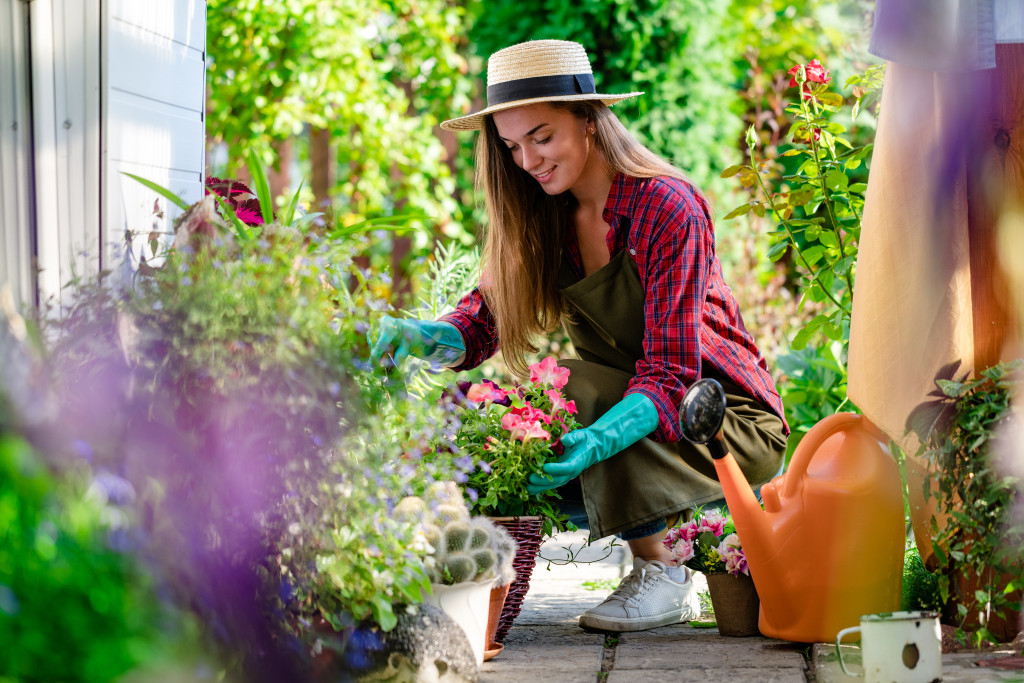In everything we do, people today need to push for sustainability. There’s a growing recognition that modern levels of consumption have to be lowered. Otherwise, there won’t be enough resources to go around soon.
We buy bamboo kids’ plates in eco-friendly packaging even as we teach the next generation to take better care of the environment. Every home upgrade offers the potential to not only improve beauty and functionality but switch to more energy-efficient versions of what’s currently installed.
However, our gardens can get overlooked in the focus on sustainability. After all, they are typically the only natural spaces in our homes. The mere presence of greenery is associated with things that are good for the environment.
Yet perceptions can be deceiving. As much as we need green spaces in our daily lives, common practices can actually be harmful to the environment. Of all things, our gardens might actually be unsustainable, and that’s a problem good design can address.
Unsustainable human desires
Gardens tend to exist at the intersection of human intentions and natural tendencies. Plants aren’t static objects. They are living things, with their own mechanisms for growth and response to stimuli.
Yet human property owners seek to impose their own desires upon the natural spaces within their homes. We want things to look beautiful, so we choose to cultivate plants with showy flowers or pretty leaves. Similar reasons drive us to attempt to grow vegetables or fruit-bearing trees.
Too often, however, our attempts to bend nature to our will are costly. We invest not only extra time and effort in gardening but additional resources. Those can include water and soil, fertilizer, pesticides, or herbicides. These things conflict with the basic assumption of sustainability, which is that input must be less than or equal to output.
Perhaps the most egregious example of such unsustainable practices is the standard American lawn. Lawns are a monoculture enforced by homeowner’s associations and suburban development rules. They are biological deserts, prone to disease and insect outbreaks, require loads of attention and chemical maintenance, and comprise the largest irrigated crop in the country.
Applying sustainable practices

The movement towards sustainable gardening is an attempt to address such issues. And it has been gaining traction in recent years.
Sustainable gardening involves working with nature, rather than against it. Instead of attempting to grow monocultures or raise costly plants for their aesthetic or food value, homeowners should allow native species to flourish.
Native plants are naturally suited to local conditions. They have evolved to become resistant to pests and disease, and tolerant of the typical range of precipitation in the area. This means that you need less input to keep them alive.
Also, native plants have symbiotic relationships with local pollinator species. They attract birds and bees, and other insects, to enrich the area’s biodiversity and help propagate other plants. Allowing native species to thrive in your garden is a form of giving back to the local ecosystem.
Sustainable gardens also emphasize the conservation of resources. Thus, instead of using fertilizer or importing soil from a supply store, you can use compost. You add mulch to retain moisture. You don’t intervene with chemicals or irrigation.
Landscape design solutions
For some property owners, having a sustainable garden is enough. It’s hassle-free and low-maintenance, which are attractive benefits in their own right.
But many people still want gardens to uphold a certain standard of beauty or functionality. This is where design comes into play. Effective design helps solve problems. In this case, it’s a problem of reconciling natural elements with human interventions.
If we want to have sustainable gardens that still manage to look attractive and maybe yield produce, the landscape and its elements must be designed accordingly.
Features such as a rainwater tank can store and dispense additional water without increasing our consumption. This excess capacity can, in turn, support some moisture-loving plants in select areas of the garden.
Growing native plants also doesn’t have to limit you to whatever the wind blows into your property. You can buy native wildflowers or heirloom seeds. These offer attributes like aesthetic value or edible yields while still retaining the resilience and low maintenance costs of native species.
You can also use landscape design to ‘sculpt’ your garden by breaking up space with gravel-lined paths. This turns even unremarkable-looking patches of native plants an interesting shape, while the gravel helps avoid soil compaction and retains moisture.
And if you’re worried about conforming to property regulations, try growing a lawn substitute like clover. It’s hardy and low-maintenance, keeps out weeds, and you can mow it down to return nutrients to the soil.